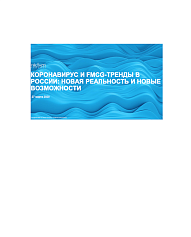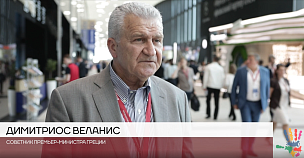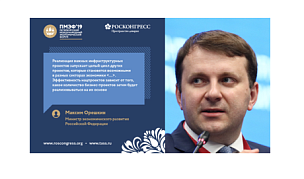The publication by Nielsen describes the impact of the COVID-19 pandemic on FMCG, provides relevant data on market trends and sales of main product categories, and outlines consumer behavior shifts across countries depending on the phase of the crisis.
The Roscongress Foundation presents the salient points of the publication accompanied by fragments of broadcasts of relevant panel discussions from the business programme of international events held by the Roscongress Foundation.
The COVID-19 pandemic has changed the course of the FMCG market across countries. In particular, it has shaped several groups of most-in-demand products
The coronavirus epidemic has triggered a number of changes in many areas of business and private life. The socio-economic processes it has started are having a huge impact on the trajectory of FMCG (fast moving consumer goods) and retail in Russia and globally.
Having studied sales data for specific products, categories, and markets, the Nielsen analysts identified several product categories with the greatest sales growth.
This spring, consumers were forced to alter their purchase habits, with reasons for store visits and the consumer basket changing. Stockpiling of essential goods is identified as the primary need brought into being by the pandemic and mass quarantines. In most countries, consumers prioritize health and personal hygiene products (such as sanitizers, face masks, toilet paper) and shelf-stable foods (such as groats, flour, and canned foods).
Three-digit growth in sales of specific products (such as 746% growth for sanitizers in the UK) is putting an additional strain on manufacturers and suppliers of the goods that are growing in demand.
This is why the coronavirus pandemic will also serve as a test of strength for manufacturers and suppliers due to the necessity of producing the required volumes and checking the adequacy of the supply chains.
As the coronavirus outbreak evolves, six consumer behavior thresholds can be identified
Based on a specially developed methodology, the Nielsen analysts identify six key consumer behavior threshold levels which countries pass as the epidemic evolves. The phase any particular country is in can be determined based on common COVID-19 event markers (number of cases, number of deaths, quarantines).
Threshold #1: Proactive Health-Minded Buying (minimal localized cases of COVID-19 generally linked with arrival from another infected country). Interest rises in products that support overall maintenance of health and wellness.
Threshold #2: Reactive Health Management (local transmission and/or first COVID-19 related death(s)). Customers prioritize products essential to virus containment, health and public safety, e.g. face masks.
Threshold #3: Pantry Preparation (accelerating cases of COVID-19, but not necessarily deaths). Pantry stockpiling of shelf-stable foods and a broader assortment of health-safety products; spike in store visits; growing basket sizes.
Threshold #4: Quarantined Living Preparation (localized COVID-19 emergency actions; percentage of people diagnosed continues to increase). Increased online shopping; a decline in store visits; rising out-of-stocks; strains on the supply chain.
Threshold #5: Restricted Living (mass cases of COVID-19; communities ordered into lockdown). Severely restricted shopping trips; online fulfillment is limited; price concerns rise as limited stock availability impacts pricing.
Threshold #6: Living in a New Normal (quarantines lift; life starts to return to normal). People return to daily routines, but operate with a renewed cautiousness about health; permanent shift towards e-commerce.
In the last week of March, consumers in Russia jumped to threshold level 3: they began stockpiling foods and emergency supplies. As early as in the beginning of March, buckwheat, rice, and sugar became the most popular products in the consumer basket. Sales growth for these products was 66%, 64%, and 56% respectively. The Nielsen experts note that spikes in sales and demand for some goods are likely to continue in the near term.
In offline retail, the following trend can be observed: the larger the store format, the greater the sales shift. For example, in minimarkets the growth in sales between 9 and 15 March was 27.2%, while in hypermarkets it was as low as 8.8%. Meanwhile, sales growth in online trade continues to exceed 100% over the first two weeks of March.
After the crisis: Opportunities for manufacturers and retailers
Manufacturers and retailers should start getting ready for the moment when Russian consumers reach the sixth threshold.
After they return to seemingly normal life, consumers will retain some of the new habits acquired during the crisis. Analysts expect that increased demand for health and personal hygiene products will continue after the pandemic. Caring about personal hygiene and wellness will become a new norm and will be retained for a long period. This is why manufacturers and retailers should explore opportunities to increase sales of related product categories, stabilize demand, and offer marketing support for certain products.
The trend towards a shift in consumer behavior will also continue. Even after quarantines are lifted, many people will continue to work from home, reducing the number of store visits and prioritizing online shopping. Even now, the Russian authorities have already allowed to sell over-the-counter medicines online while Minpromtorg (the Ministry of Industry and Trade) is discussing whether to allow online selling of alcohol. Given all the trends described above, e-commerce businesses must get ready for an increased demand and focus on developing their infrastructure.






